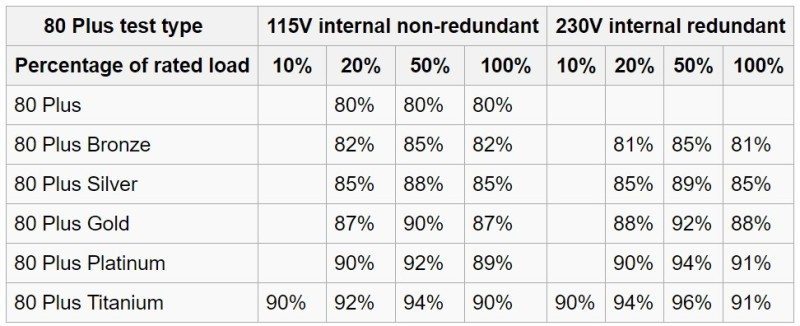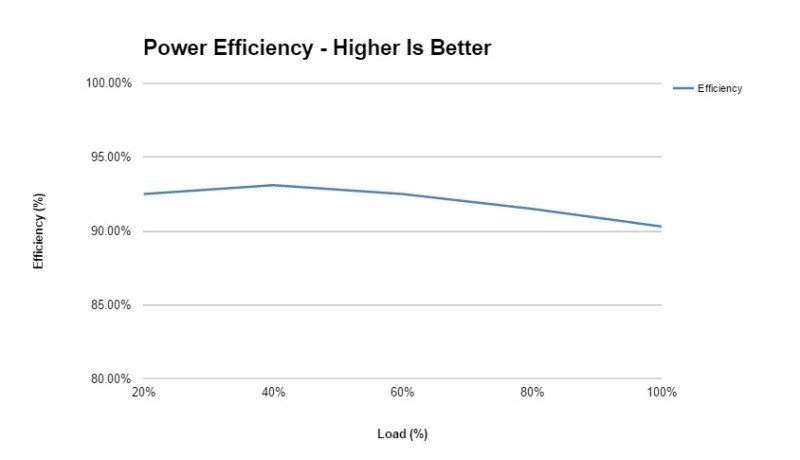SilverStone Strider Platinum ST55F-PT 550W Review
Peter Donnell / 9 years ago
Efficiency, PFC and Voltage Regulation
Voltage Regulation
To test voltage regulation we load the power supply to five different load scenarios that give an equal spread of load across every single rail. So that means 20% on all rails, 40% on all rails and so on. We then calculate the average deviance of each rail from its expected voltage.

Great results here, with Silverstone promising at least 3% regulation, but performing far better than that. I’m especially happy with the 12V1 and V2 rails performance.
Power Efficiency
Power efficiency is measured by calculating actual supplied wattage divided by the wattage drawn at the wall/plug, multiplied by 100 to give a percentage. We then compare that to the particular 80 Plus certification the company claims to see if it meets that. You can see the 80 Plus certifications below, we always test 230v power supplies.

Power efficiency is right where it should be, delivering results within the 80 Plus Platinum standard, which is great for those who don’t want to burn more electricity than they need to.
Efficiency is right on the money here, falling comfortably within the Platinum rating and that’s great for those who don’t want to be wasting more power than they need to while running their rig.
Power Factor Correction
Power Factor Correction is the ratio of the real power flowing to the load, to the apparent power in the circuit. The aim of PFC is to make the load circuitry that is power factor corrected appear purely resistive (apparent power equal to real power). In this case, the voltage and current are in phase and the reactive power consumption is zero. The closer the number to one the better as this allows the most efficient delivery of electrical power (Source – Wikipedia).

Excellent PFC performance here, with the rating being better than we usually see, although about on par with other Platinum rated units.



















